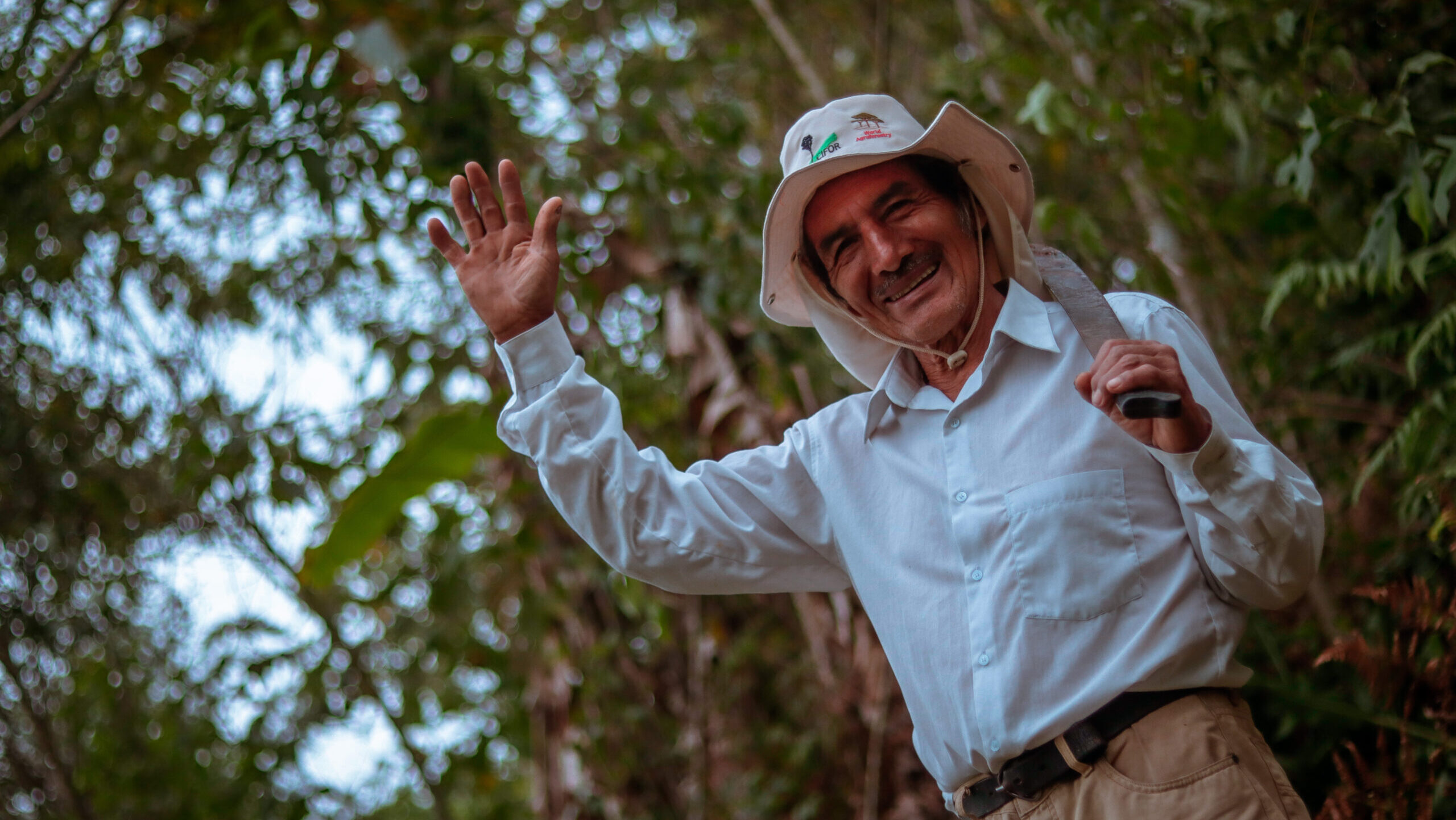Pedro Grandez, an example of sustainable use in Amazonia

Pedro Grandez is proud of what he has learned, because he has been able to improve his coffee production and at the same time contribute to the conservation of the forests. At almost 87 years of age, this farmer from the community of Villa del Triunfo, district of Soritor, province of Moyobamba (San Martin), and a self-confessed orchid lover, maintains an excellent relationship with the CIFOR-ICRAF technicians of the AgroFor project, with whom he has worked to achieve his dream of obtaining a CUSAF (Cession in Use of Agroforestry Systems).
In 1996, Pedro began to work on his 11 hectare plot. Today there are 7 purmas, areas where he has managed to reforest a forest that also serves as a feeding ground for various species. In this place – which also provides benefits against pests, soil regeneration and carbon storage – timber species, medicinal plants and ornamental plants are growing. All of this man’s work is an example of what can be achieved by promoting sustainable development in the Amazon.
For Pedro, the idea of continuous improvement is not for his own benefit. Proof of this is the emphasis he gives to the cultivation of native forest species such as cedar, because although he believes that this type of tree does not give a “reward” today, the idea is to think of future generations, that is, to see this work as an improvement for humanity and other living beings that need a natural space.

According to Pedro himself, there are several associations willing to manage the land granted by the State in a responsible manner, with all the advantages of having access to a CUSAF. It should be remembered that this type of contract is regulated by the Forestry and Wildlife Law (Law No. 29763) and is granted for 40 years, renewable, for an area of no more than 100 hectares. With this type of contract, farmers acquire legal security and obligations on forest land.
So far, more than 500 families are in the process of obtaining CUSAFs, thanks to the work of the AgroFor project, which was founded by the Peruvian Society for Environmental Law (SPDA), the regional government of San Martin, the Global Green Growth Institute (GGGI), the International Center for Research in Agroforestry (ICRAF), and with support from the Norwegian International Climate and Forest Initiative (NICFI). The challenge? To reach thousands of beneficiary families and the tireless Pedro.